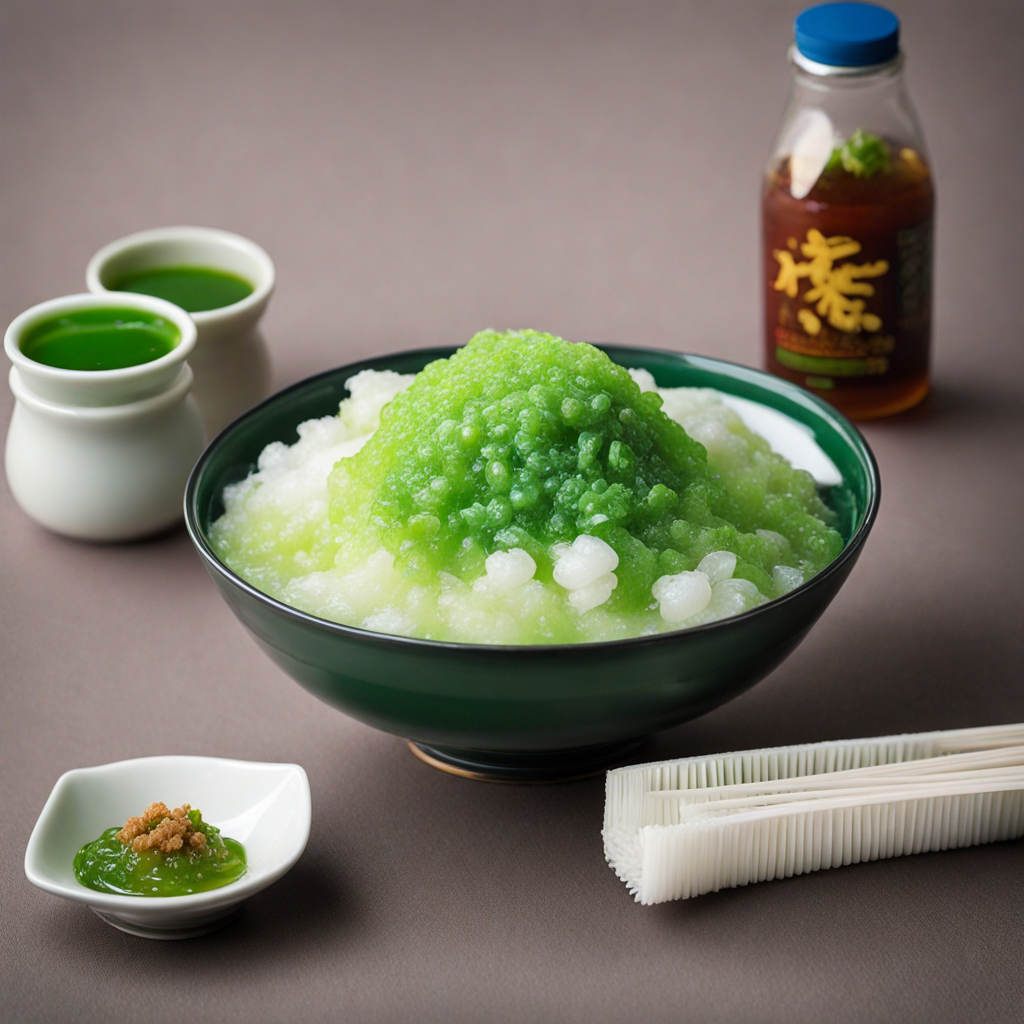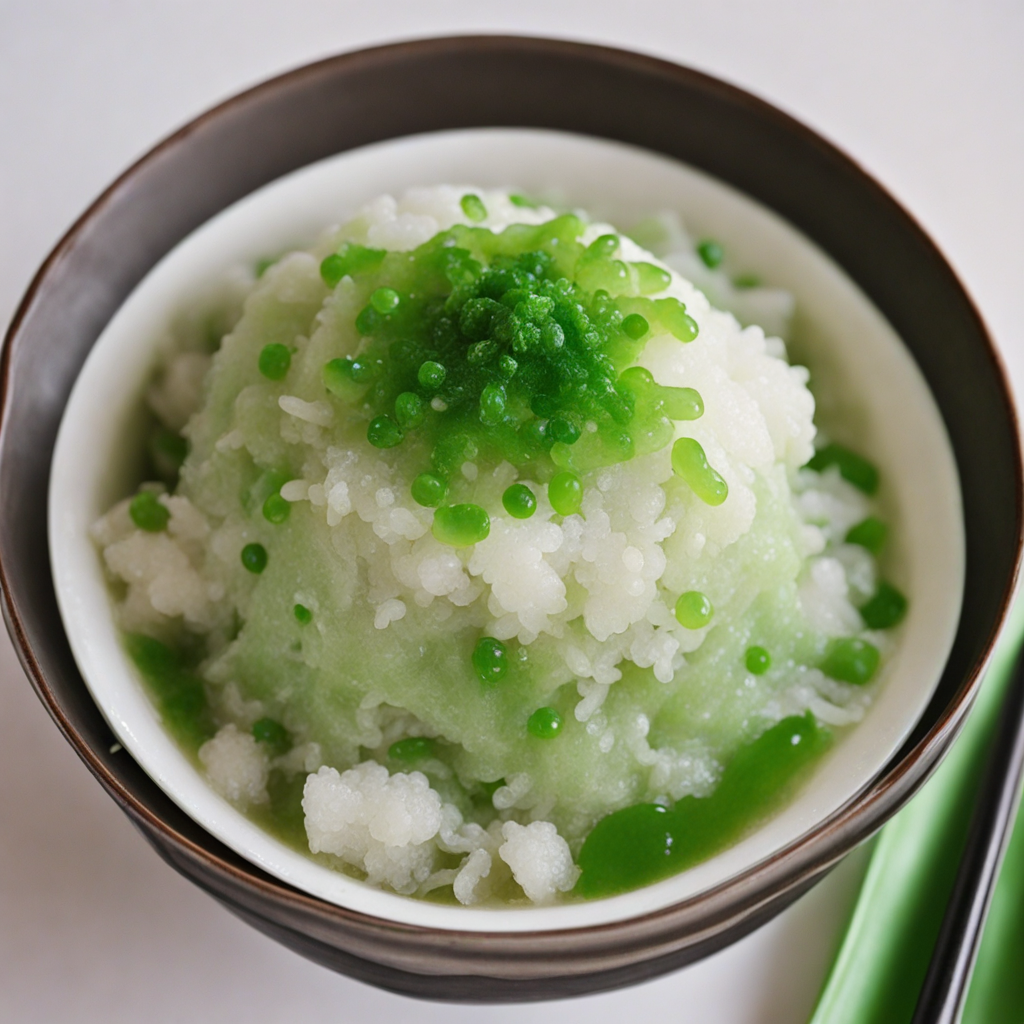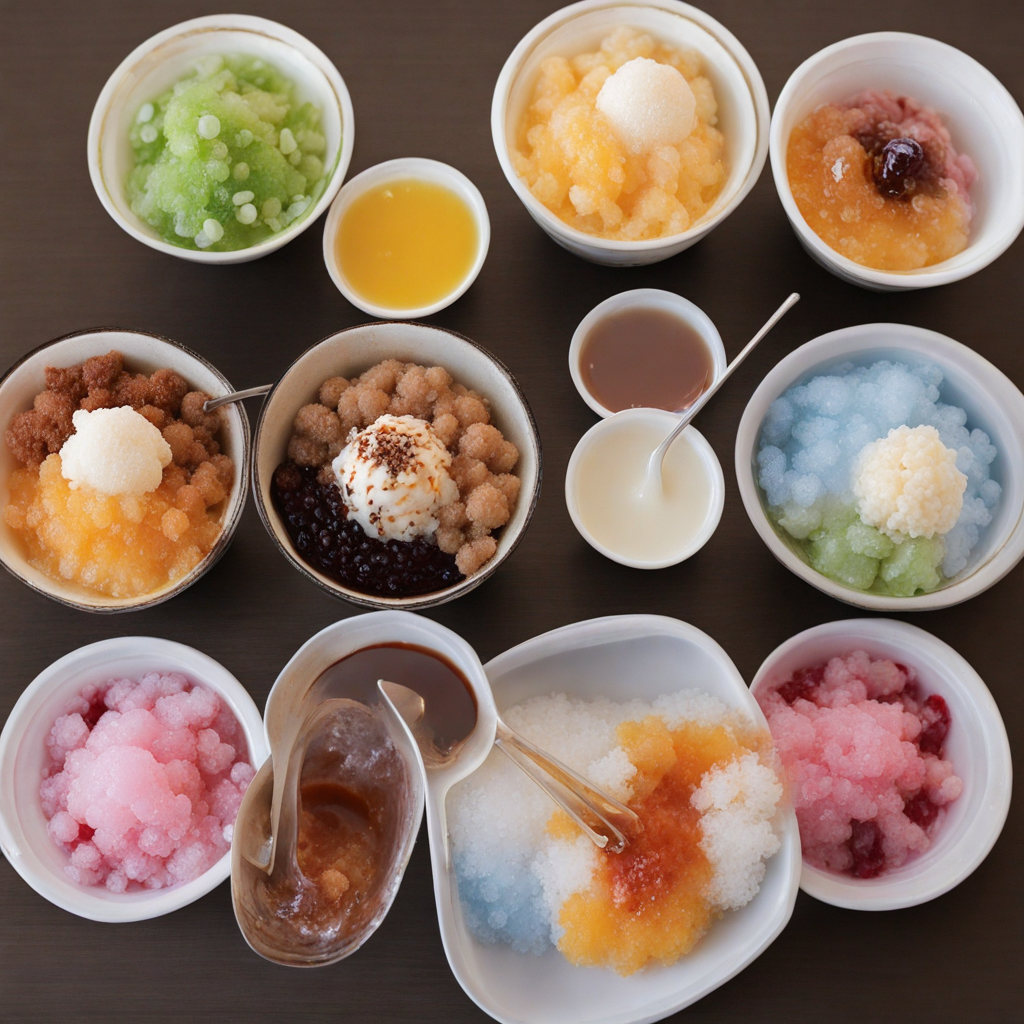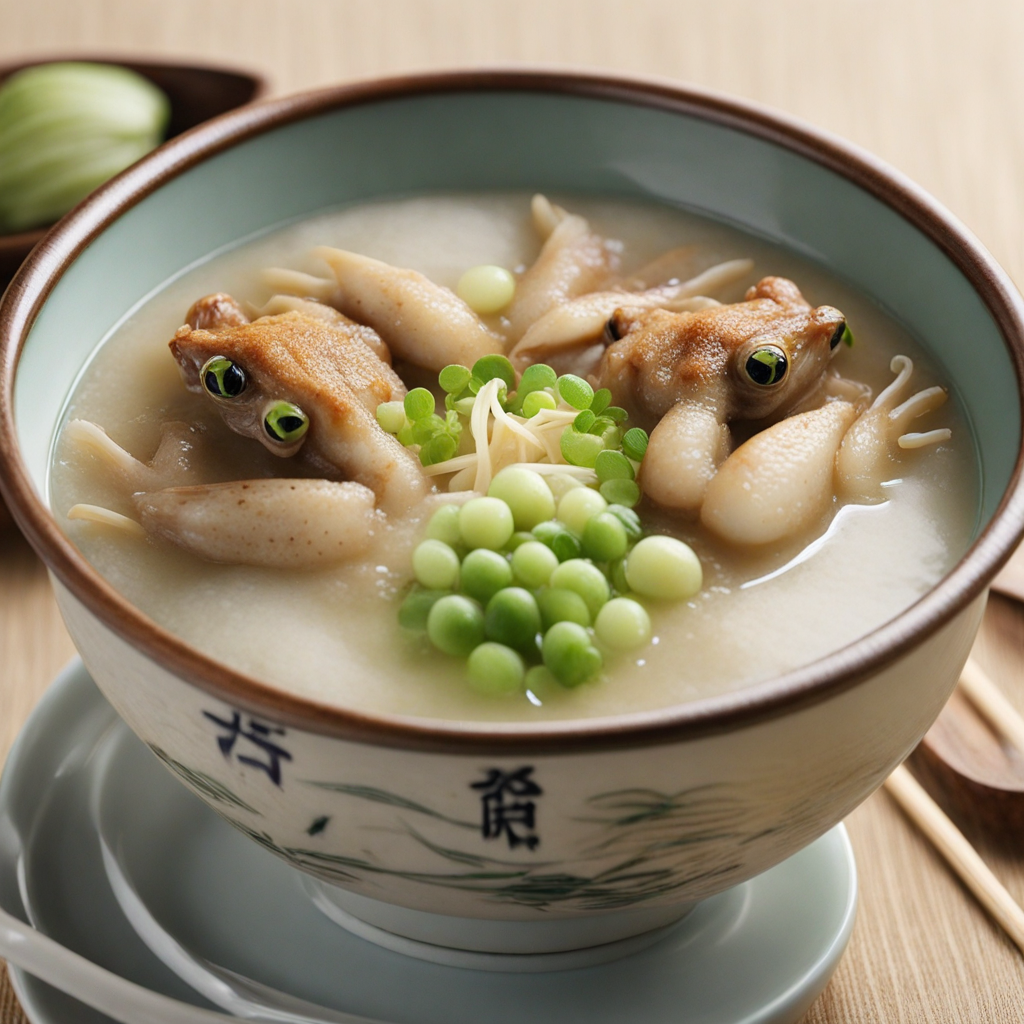Chendol
Chendol is a delightful dessert that embodies the vibrant flavors and textures of Southeast Asia, particularly popular in Singapore. This sweet treat features a base of finely shaved ice, which creates a refreshing and cooling effect, making it perfect for the tropical climate. At the heart of Chendol are the green pandan jelly noodles, made from glutinous rice flour and infused with fragrant pandan leaf extract. Their unique color and chewy texture provide a playful contrast to the other components of the dish. To elevate the experience, Chendol is generously drizzled with rich coconut milk, which adds a creamy and luxurious element to the dessert. This coconut milk is often sweetened with palm sugar, creating a harmonious balance of sweetness that enhances the overall flavor. The combination of the icy base, chewy noodles, and creamy coconut concocts a symphony of tastes that dance on the palate, providing both refreshment and satisfaction. Chendol is often garnished with additional ingredients like sweet red beans or sweet corn, adding more layers of flavor and texture. Each bite offers a delightful experience that encapsulates the essence of traditional Singaporean desserts. Whether enjoyed as a midday snack or a satisfying end to a meal, Chendol is a must-try for those seeking to explore the sweet side of Singaporean cuisine.
How It Became This Dish
The Journey of 煎蕊: A Culinary Icon of Singapore 煎蕊, or "Chendol," is an iconic dessert that embodies the vibrant culinary tapestry of Singapore. With its unique combination of ingredients and textures, this sweet treat is not only a favorite among locals but also a symbol of the multicultural heritage that defines the nation. The origins, cultural significance, and evolution of Chendol reflect the broader historical narrative of Singapore itself, showcasing its rich blend of traditions and flavors. Origins of Chendol The roots of Chendol can be traced back to Southeast Asia, particularly to Indonesia and Malaysia, where similar desserts have been enjoyed for centuries. The name "Chendol" is believed to be derived from the Javanese word "cendol," which refers to the green rice flour jelly that is a key component of the dish. The jelly, made from pandan leaves, gives Chendol its distinctive green color and fragrant aroma. The earliest forms of this dessert were simple concoctions of shaved ice, coconut milk, and palm sugar syrup, enjoyed by the communities living along the lush riverbanks of the region. As trade flourished in the 19th century, culinary practices crossed borders, leading to the exchange of recipes and cooking techniques that would shape the dessert's evolution. The introduction of ingredients such as red beans and sweet corn further enriched the dish, allowing for regional variations to emerge. Communities in Singapore—comprising Malays, Chinese, and Indians—adapted the dessert to their tastes, creating a fusion that reflects their diverse cultural backgrounds. Cultural Significance In Singapore, Chendol transcends its status as a mere dessert; it is a cultural artifact that brings people together. This dish is often associated with the hot and humid climate of the region, serving as a refreshing respite from the tropical heat. Traditionally, Chendol is sold by street vendors, who have perfected the art of serving this icy treat in a way that tantalizes the senses. The preparation of Chendol is a communal activity, often enjoyed during family gatherings, festivals, and celebrations. It is not uncommon for families to gather around a table, sharing stories and laughter over bowls of Chendol. This sharing aspect reinforces the values of community and kinship, making it an integral part of social life in Singapore. Moreover, Chendol reflects the broader narrative of Singapore’s multicultural identity. The dessert, while distinctly associated with the Malay community, has been embraced by various ethnic groups. This adaptability highlights the ethos of Singapore as a melting pot of cultures, where culinary traditions intermingle and evolve. The presence of Chendol in hawker centers—a hallmark of Singaporean culture—further cements its place in the national identity, as these bustling food courts serve as a microcosm of the nation’s diverse heritage. Evolution Through Time As Singapore's economy developed and its population grew, so too did the ways in which Chendol was prepared and served. In the early 20th century, the dessert was primarily enjoyed in its traditional form. However, as Singapore transformed into a bustling metropolis, the culinary landscape began to shift. The influx of tourists and expatriates introduced new flavors and ideas, prompting local vendors to innovate and experiment with Chendol. By the late 20th century, Chendol was no longer limited to traditional ingredients. Vendors began to incorporate a variety of toppings and flavors, appealing to a broader audience. Modern interpretations of Chendol now include ingredients such as durian, a popular tropical fruit known for its strong aroma; mango puree; and even ice cream. These variations have contributed to the dessert’s continued popularity, allowing it to evolve while remaining rooted in its historical origins. In recent years, the rise of social media and food blogging has also played a crucial role in the evolution of Chendol. Pictures of colorful Chendol bowls, artfully presented with an array of toppings, have made their way onto platforms like Instagram, enticing younger generations to seek out traditional desserts. As a result, Chendol has experienced a renaissance, with new vendors sprouting up, each offering their unique twist on the classic recipe. The Contemporary Scene Today, Chendol is celebrated not just as a dessert but as a cultural experience. Food festivals and events often showcase this beloved treat, highlighting its significance in Singaporean cuisine. Local chefs have taken the initiative to elevate Chendol, incorporating gourmet elements such as artisanal coconut milk and organic palm sugar, while still honoring its traditional roots. Furthermore, the popularity of Chendol has extended beyond Singapore. With the rise of global interest in Southeast Asian cuisine, this dessert has garnered international attention. It is increasingly featured in restaurants and food festivals around the world, introducing new audiences to the flavors of Singapore. The globalization of food culture has allowed Chendol to transcend geographical boundaries, fostering a greater appreciation for the dish and its heritage. Conclusion Chendol is more than just a sweet treat; it is a testament to the rich history and cultural diversity of Singapore. From its humble origins in Southeast Asia to its status as a beloved dessert, Chendol encapsulates the spirit of a nation that thrives on culinary innovation and communal sharing. Its evolution over time reflects not only changes in taste but also the broader societal shifts that have shaped Singapore into the dynamic city-state it is today. As Chendol continues to adapt and flourish, it serves as a delicious reminder of the interconnectedness of cultures and the power of food to bring people together. In every bowl of Chendol, one can taste the history, experience the culture, and celebrate the shared humanity that transcends borders—making it an enduring symbol of Singaporean identity. Whether enjoyed at a bustling hawker center or within the comforts of home, Chendol remains a cherished emblem of the nation's culinary heritage, inviting all to savor its sweet legacy.
You may like
Discover local flavors from Singapore







